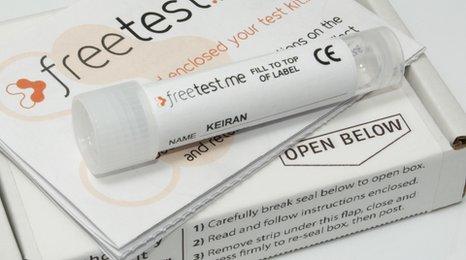Chlamydia - what you need to know
- Published

Free chlamydia test kits are available online
There are a few ways you can deal with chlamydia.
Ignore it, laugh about it, or just cross your fingers and hope to never get it.
But if you ever have sex - and lots of people do - there's a chance chlamydia will come your way.
More than 120,000 people a year get infected in the UK; most are under 25.
The effects can be nasty. Thankfully, the cure is simple.
Chlamydia - sounds like a Greek holiday resort?
It's not. Although you might catch it on holiday.
Chlamydia is a Sexually Transmitted Infection (STI).
It's passed by most types of sex.
For men, the main symptom is a gooey liquid seeping out of the penis, usually white or cloudy-looking.
However, not every man who has chlamydia gets that.
For women, there's usually no sign of infection.
If there's no symptoms, what's the problem?
Chlamydia can turn into something more serious.
Females tend to suffer the worst.
It can lead to Pelvic Inflamatory Disease, which leaves some women unable to have babies.
Men's testicles can get infected, in the worst cases leaving them infertile.
Chlamydia sometimes causes blindness.
Curing it is easy - a quick course of antibiotics works for both men and women.
Now I'm worried. How do I get tested?
You've got two basic choices. Go and see someone, or do a home test.
GPs, family planning clinics, Genitourinary medicine (GUM) clinics, and some pharmacies offer the service.
There's no poking or probing with a rubber-glove.
For men the chlamydia test involves peeing in a pot.
Women can also give a urine sample, or take a swab of their vagina.
Home tests are available from the internet and some high-street chemists.
You might have to pay for them, but many local authorities offer free kits.
- Published9 April 2010
